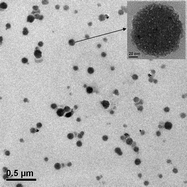Structure and permeation of organic–inorganic hybrid membranes composed of poly(vinyl alcohol) and polysilisesquioxane†
Abstract
Organic–inorganic hybrid membranes with high separation performance were prepared by the incorporation of polysilisesquioxane (PSS) into a poly(vinyl alcohol) (PVA)


 Please wait while we load your content...
Please wait while we load your content...